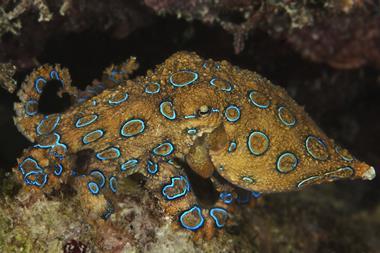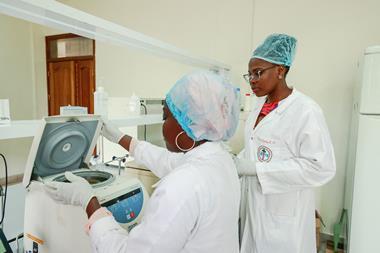Laccaic acid, thought to be produced by lac insects, is produced by a symbiont similar to the zombie ant fungus

There’s nothing Titian loved more than a red satin robe. The works of the Renaissance Venetian artist are full of them, perhaps most famously that flying off the shoulder of the god Bacchus as he leaps from his chariot to claim Ariadne, waving off her lover Theseus from the island of Naxos in Bacchus and Ariadne. Titian’s rendering of these materials were masterclasses in the art of glazing, laying translucent colours over one another to create a deep lustrous tone. ‘Glazes, thirty or forty!’, he is said to have exclaimed.
The reds that Titian used for glazing were ‘lakes’, made by binding a translucent red colourant to the surface of fine white alumina particles made from alum. The red pigments were organic: extracts of plants (such as madder root) or insects (such as cochineal). They typically had a purplish, blood-red hue, unlike the orange-red of inorganic vermilion (mercury sulfide).
Such organic red pigments had been used since antiquity, but there was a lot of confusion in Titian’s day about where they came from. The name ‘lake’ (which became a generic term for any organic pigment fixed to an inorganic carrier) derived from the Latin lac, a gummy resin found on trees indigenous to India and southeast Asia. Lac was imported to Europe since the early 13th century, but few who used it were aware that the resin was in fact made by a scale insect that dwelt on the trees. Even today, lac insects are cultivated for their pigments, used in dyes, paints and jewellery, and in shellac lacquer, a processed form of the resin.
A related red pigment used in medieval Europe was known as kermes, again a resin made by a scale insect (Kermes vermilio) that lived on scarlet oaks in the Mediterranean and Near East. The clue about the source was in the name, derived from the Sanskrit kirmidja, meaning ‘from a worm’; it is the linguistic root of ‘crimson’ and ‘carmine’. These insect-derived pigments gave the finest red lakes – Titian reserved them for the uppermost layers of his glazes.
Long history
Because the encrustation of resinous blobs on the branches looked like berries, some thought that is precisely what they were. The Greek writer Theophrastus called the kermes pigment kokkos (Latin coccus), ‘berry’, and Pliny the Elder refers to it as granum, grain. ‘Dyed in grain’ thus meant dyed crimson – and because the dye was relatively colourfast and long-lasting, ‘ingrained’ came to mean permanent.
With this long and rich history, you might imagine that we know all about these red pigments. But not at all. Sure, they have long been chemically characterised: those in lac resins are laccaic acids, aromatic polyketides that are derivatives of anthraquinone. In insects the pigments are thought to protect against pathogens, parasites and predators, and perhaps also against UV damage.
But here’s the puzzle: insects have long been thought incapable of producing aromatic polyketides such as anthraquinones from scratch. Until recently, biosynthesis of these compounds had been observed only in plants, fungi and bacteria. That constraint was challenged, however, in 2018 by a team in Denmark, who presented evidence that carminic acid, the anthraquinone-based colourant of cochineal-producing scale insects such as the cactus-dwelling Dactylopius coccus, might be made by the insect itself.1 They reported that the insect at least makes the compound flavokermesic acid anthrone, an intermediate in the pathway to both carminic and laccaic acids.
Getting to the carminic acid pigment itself, the researchers argued, involves a series of polyketide reactions that demand enzymes called polyketide synthases (PKSs). None of those has been isolated from insects. But the Danish team suggested that these bugs could have acquired them either by horizontal gene transfer from endosymbiotic bacteria or fungi, or by evolution from the insects’ own fatty-acid-making enzymes. (Genes transferred from fungi to aphids are responsible for those insects’ ability to make red carotenoid pigments.)
Researchers at the Indian Institute of Science in Bengaluru now offer another possibility. They have shown that the most widely cultivated lac insect, Kerria lacca, is not itself the source of laccaic acid.2 Instead, it comes from a symbiotic yeast-like fungus, which they designate KLYLS and which resembles the insect parasite genus Ophiocordyceps – a species of which is the ‘zombie ant’ fungus made famous by the video game and related TV series The Last Of Us. Similar symbiotic fungi are hosted by the insects that make kermes and cochineal pigments. The fungus is hard to study, as it can’t be cultured on its own, but the researchers performed genetic analysis that showed that it seems to have PKS enzymes, whereas the insects have none.
So there it is: Titian’s richest reds were probably sourced neither from berries nor insects, but from humble fungi.
References
1 SA Rasmussen et al., Insect Biochem. Mol Biol. , 2018, 96, 51 (DOI: 10.1016/j.ibmb.2018.03.002)
2 Vaishally et al., PNAS, 2025, 122, e2501623122 (DOI: 10.1073/pnas.2501623122)

















No comments yet